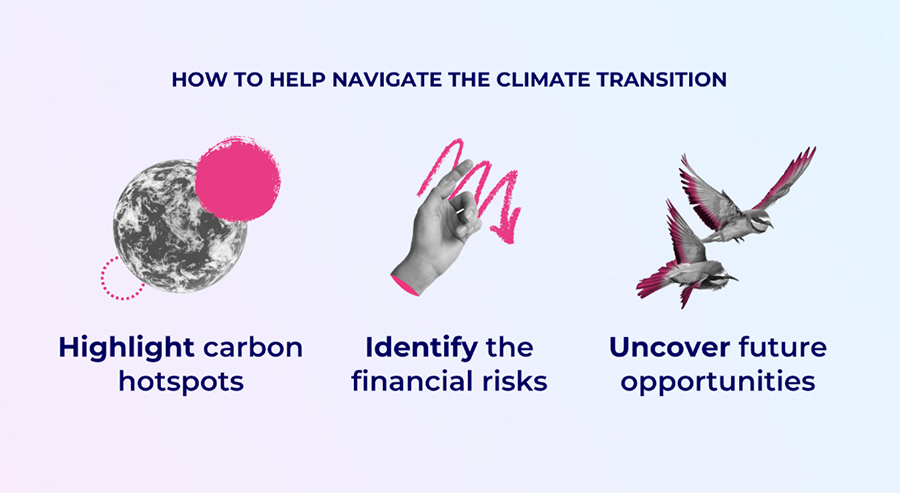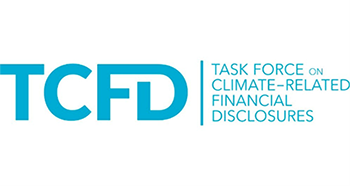The TCFD framework, which aligns the impact of climate change with exposure to financial risk, will be mandatory in the UK from 2025 for all large private and listed companies. This takes the climate conversation directly to the boardroom, and advertisers can expect more scrutiny from investors, says the Purpose Disruptor’s Nadeen Ayyashi.
“A sustainability revolution is taking hold across every sector of our economy” – Al Gore
We are already seeing this revolution taking place in energy (fossil fuels to renewables) and automotive (diesel to EVs). The advertising industry has yet to grasp the significance and scale of the climate transition it needs to make.
But the change is coming down the track. Fast.
Here we share two emerging forces that could determine the shape and pace of the climate transition in advertising:
- mandatory reporting and
- investor pressure.
Both forces are harnessing the idea of Advertised Emissions.
But firstly, what are Advertised Emissions?
The more ads we see, the more we buy. Advertised Emissions is a methodology to calculate the greenhouse gas emissions that result from the uplift in sales influenced by advertising :

So how can measuring Advertised Emissions help practitioners, agencies and media owners navigate the climate transition?
- Highlight carbon hotspots in a client portfolio – Calculating Advertised Emissions shows the high-carbon hotspots and areas of opportunity to focus on sustainable products and services, it also provides a baseline from which a reduction pathway can be created. This view becomes the strategic lens for what the client portfolio could look like in 3-5 years.
- Identify the financial risks to the business resulting from climate change – By measuring Advertised Emissions, agencies and media owners can identify the risk across a client portfolio that will translate to direct financial cost (e.g working with clients in hard-to-abate sectors), highlight where revenue might be at risk and create a path for a well-managed transition away from industries posing a potential future risk.
- Uncover future, low-carbon opportunities – On the flip-side, measuring Advertised Emissions enables agencies and media owners to identify opportunities to promote low-carbon alternatives and more sustainable behaviours, so that they can divert their attention and effort to be in service of the people and planet.

Advertised Emissions are a critical factor in helping agencies and media owners develop robust climate transition plans. This is why it is already being included in what will become mandatory reporting and desired by the investor community.
Mandatory reporting is on the way…
Reporting on carbon emissions is an important part of climate transition plans; it provides a baseline, today, to understanding the impact your business has on climate. Another important part is understanding the risks and opportunities facing a business in the future, where the operating environment will only become more challenging as the climate crisis deepens. Advertised Emissions can help businesses shed light on both by offering: a baseline for today and a lens to the future.
Risk management is not a new discipline and is very much embedded in operations of any organisation; businesses do this to make sure their business is relevant and profitable in light of future and emerging trends. This now includes the impact of the climate crisis with voluntary disclosures now becoming mandatory.
One of the leading bodies on climate risk is the Task Force on Climate-related Financial Disclosures (TCFD); a global body made up of some of the most prominent financial institutions, whose main focus is reporting the exposure to financial risk in a consistent and comparable way.
TCFD issued a guiding framework on how to identify, report and understand how climate change will impact the financial stability of businesses by looking at things like financial risk, strategic planning and decision-making processes.


Source: TCFD https://www.fsb-tcfd.org/about/
The framework will be mandatory in the UK from 2025 for all large private and listed companies. This is important because it aligns the impact of climate change with exposure to financial risk, it takes sustainability out of the sustainability department and puts it squarely in the boardroom.
Advertising agencies and media owners’ business models are built on the strengths of their client portfolio. A client portfolio can create areas of great risk or great opportunity; so it is important for clients to also present credible climate transition plans. By understanding the carbon hotspots, risks and opportunities across the client portfolio; a roadmap can be charted for a well-managed transition.
dentsu is currently at the forefront in the advertising industry. They have highlighted the importance of tackling the climate crisis head-on, calling out Advertised Emissions as a key risk to the industry’s climate transition in their 2023 TCFD report. The report highlights the importance of measuring the total impact of dentsu in terms of carbon emissions, how this currently presents across their client portfolio, the financial risks generated as a result of the work being created and how this plays into possible climate scenarios to help strategically manage an orderly transition.
The investor community backs the idea of Advertised Emissions
One audience who are very present with the negative financial consequences of business risks is the investor community. Investors have now turned their eye to the advertising industry and are looking to understand shareholder risks and opportunities across the industry.
Advertised Emissions has been called out recently by shareholders and investors in sign-on letters and at AGM meetings, as a mechanism by which advertising network groups will be assessed in the near future.
The investor community’s view is that: “Services across the entire marketing and communication value chain can have a severe adverse impact on the climate, especially, when provided to high carbon emitting clients.”
Investors see material risks for PR and advertising firms if Advertised Emissions and the climate impact of services provided to high-carbon hard-to-abate sectors are not adequately addressed; the industry has to consider not only its operational emissions but the impact of its work with clients.
Some questions investors and shareholders are asking of the industry;
- What efforts are underway to measure, assess and reduce the emissions profile of clients and/or the emissions associated with the products they promote?
- Are you considering integrating an analysis of the climate impact and transition plans of high-carbon emitting clients into your contracting processes?
- What are the policies and processes to identify environmentally harmful briefs by validating claims of high carbon emitting clients and to reject briefs or clients that are not aligned with the 1.5° C pathway set out in the Paris Agreement?
Advertised Emissions is fast becoming an instrumental tool for agencies and media owners to address shareholder questions above and communicate climate transition ambitions.
What next…
Advertised Emissions provides a lens to the future, it shines a light on the impact of a brand, agency or media owner, and indicates the types of risks and opportunities that lie ahead. It also measures the present and creates a baseline starting point for an action plan.
dentsu has demonstrated clear leadership in this space by taking the first step. What will your next step be?


